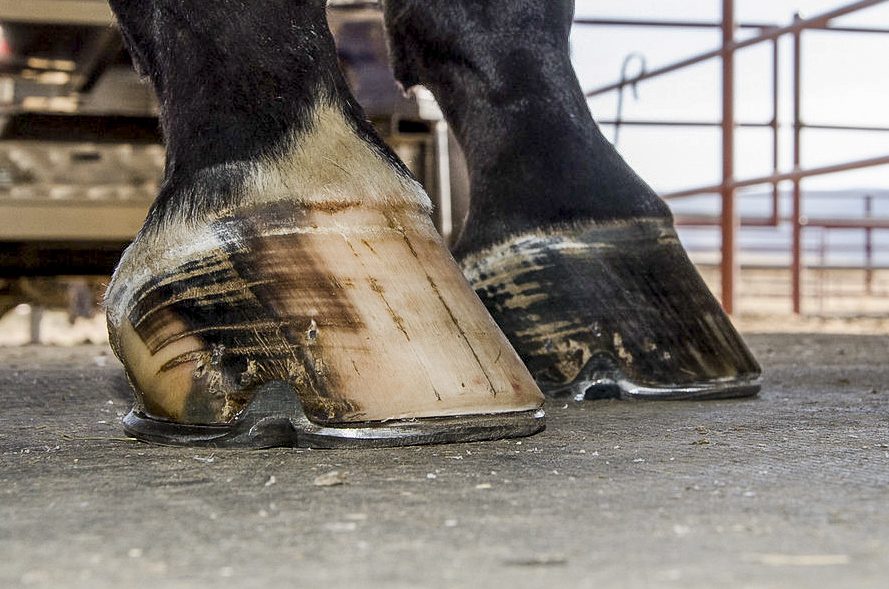Are black hooves stronger than white hooves?
John Dollar documents in The Handbook of Horse-Shoeing, published in 1898, that hoof color is a critical indicator of durability and strength. The late Doug Leach refutes the anecdotal observations in a September 1981 article in American Farriers Journal with his research that finds there is no difference in water content, chemical composition, hardness or compressive strength.
It appears the myth still holds weight in some circles, leading The Chronicle of the Horse to tap frequent AFJ contributor Steve Kraus, CJF, for answers.
“The only difference between white hooves and dark or black hooves is pigment,” the Cornell University farrier and lecturer tells the publication. “The pigment has nothing to do with the structural integrity of the foot.”
As Leach noted more than 40 years ago, the outer two-thirds of the hoof wall contains pigment, while the inner one-third adjacent to the lamellae is unpigmented. There would be increased breakdowns created by shear force if white hooves were weaker.
“Hoof strength is almost like the difference between hardwood and softwood, when you think about it,” Kraus tells The Chronicle of the Horse. “So, hooves that are under stress, that don’t hold up well, are like a soft wood that is damaged easily and maybe even rotting a little bit because it’s attacked by microorganisms. Whereas, a good solid foot is more like hardwood and not easily damaged or cracked.”
Related Content: Light Vs. Dark: The Hoof Debate Rages On







